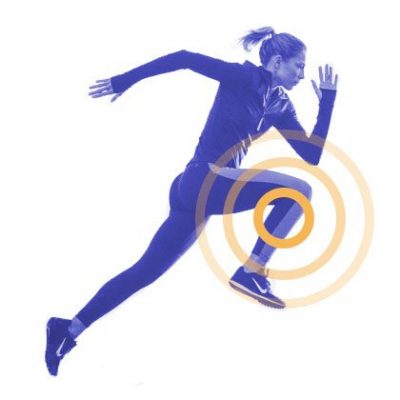There are many reasons why you may experience sore shin and calf muscles.
Shin splints is an exercise-induced pain condition in the lower leg, specifically along the shin, usually the inner (medial) side.
Common Pain Symptoms are:
- Pain along the middle and lower shin
- Pain that first comes on after running or exercising -although if the pain is not treated it can come even during walking or climbing stairs.
- Possibly mild swelling in your lower leg
- Feels like your shins are ‘over pumped’ or too tight
- It usually is in both legs, but may start on one side first
Shin splints (medial tibial stress syndrome) is caused by stress on your shinbone and the muscles and connective tissues that attach muscles to your bones. They get inflamed and painful.
Common causes of Shin Splints:
- Tight muscles
- Feet which roll in or out too much
- Shoes that don’t fit well or provide good support
- Working out without warming up or cooling down stretches
- Weak ankles, hips, or core muscles
Other possible diagnoses
Anterior tibial stress fracture
Occurs on the “leading edge” (anterior) of the shin and requires treatment as soon as possible due to risks the stress of weight-bearing pulls the crack in the bone apart. Symptoms include sharp and localized pain on the shin bone, muscular tightness too.
Compartment syndrome
Occurs when the sheath (connective tissue surrounding the muscle) around the shin muscle is too small, thus during exercise the blood flow to the muscle increases, the muscle swells up and pressure increases and presses against the sheath causing pain. Symptoms show as pain is a persistent on the outer side muscle of the shin, commonly accompanied by numbness, tingling, or a “pumped” or feeling “full” inside the muscle.
Upper Calf Pain
Popliteal artery aneurysm
Is when the deep or superficial veins have a clot/thrombosis (Popliteal artery aneurysm) that occurs when the lower leg artery in the leg gets clogged. Symptoms experienced include an abrupt onset of foot coolness, foot or leg pain, and/or numbness. Ultrasound is the best diagnosis and should be done as soon as possible. Treatment is a mix of compression garments and prescription clot-breakdown medication.
Gastronemius muscle strain
Caused by the upper calf muscle, either inner or outer (called the gastronemius muscles) that helps point the foot and toes, and flexes the knee, is stretched beyond its limits or sudden stress that the muscle isn’t ready to or isn’t able to handle. This usually occurs during sport that has quick changes or sprinting, when the muscles are too tight or are weak and ill conditioned. The symptoms are centred around pain/tenderness in the upper calf, stiffness or tightness when walking, especially going onto tiptoes, and sometimes a popping sensation. Like all muscle strains they are graded from “overstretched” to tears and ruptures.
Popliteus/Plantaris muscle strain
Is caused by the muscles at the top of the calf and behind the knee (called the popliteus or plantaris depending on position) that helps rotate the lower leg, flex the knee and stabilize the back and outer sides of the knees is strained. Just like the ‘gastrocnemius’ strain, it is damaged when it is stretched beyond its limits or sudden stress that the muscle isn’t ready to or isn’t able to handle. This usually occurs during sport that has quick changes or sprinting, when the muscles are too tight or are weak and ill conditioned. The symptoms are centred around pain/tenderness in the back or outer side of the knee and is painful with resisted knee flexion or rotated inward. It is sometimes misdiagnosed as a hamstring tendon injury or lateral cartilage (meniscus) injury.
Lower Calf Pain
Soleus muscle strain
Is when the lower calf muscle is strain. The lower calf muscle forms out of the Achilles tendon (called the soleus) extends to the upper calf which helps point the foot/toes and push off the ground when walking. The soleus is important in blood circulation by pumping the blood back to the heart. being stretched beyond its limits or sudden stress that the muscle isn’t ready to or isn’t able to handle. This usually occurs during sport that has quick changes or sprinting, when the muscles are too tight or are weak and ill conditioned. The symptoms are centred around pain/tenderness in the upper calf, stiffness or tightness when walking, especially going onto tiptoes, and sometimes a popping sensation. Like all muscle strains they are graded from “overstretched” to tears and ruptures.
WHAT CAN I DO ABOUT IT?
Treatment involves a variety of methods based on your activity, biomechanics, whether it has come on quickly or gradually and what the root cause was. Here are some treatment modalities that are used to treat shin and calf problems. It’s important to get the diagnosis right, and that’s where we come in



